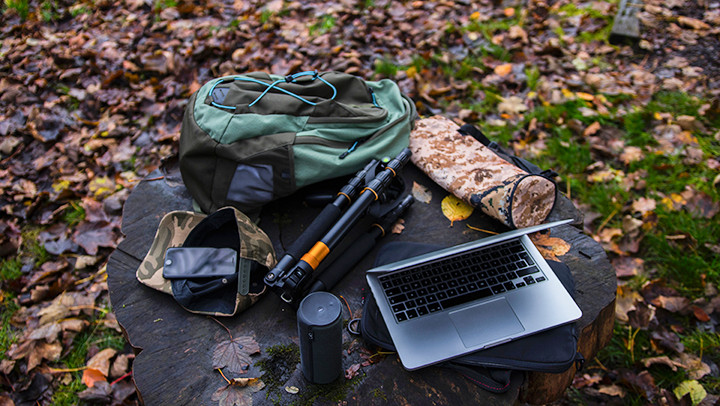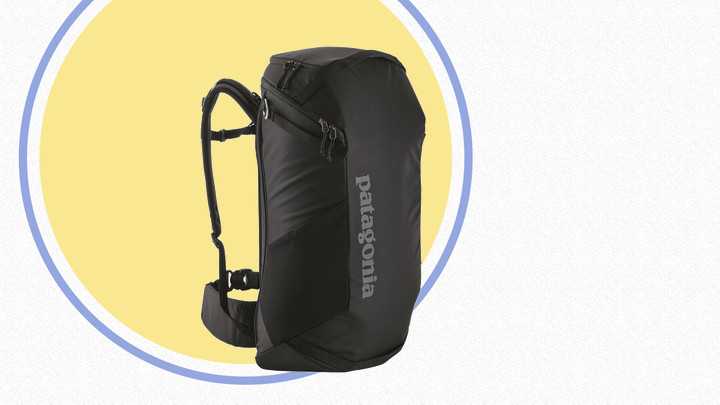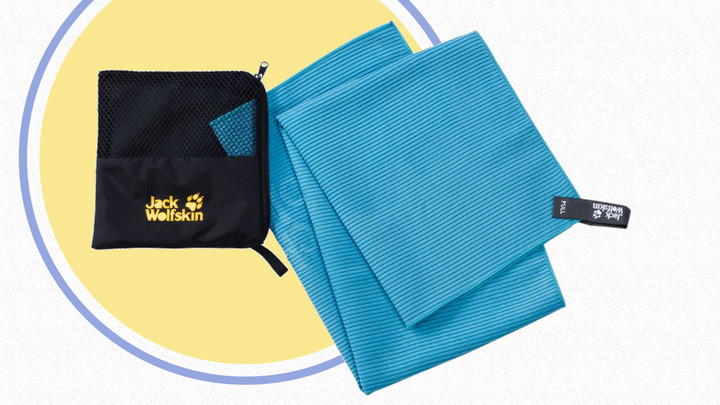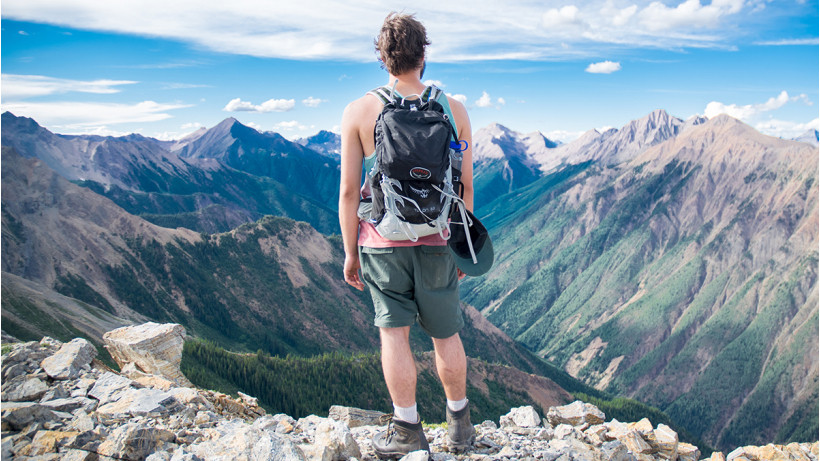It's backpacking with a well-stocked bank account
Flashpacking is a term that you may have heard being bandied about with increasing frequency, but what exactly does it mean, how – and where – do you do it and what do you need to take part?
The simple definition is backpacking but upgraded. It’s for travellers who have more disposable income, so choose to upgrade from hostels to hotels, and take flights instead of the cheapest form of transport possible.
It may be that they were backpackers in a former life, perhaps in their gap year, and travelled the world on a budget, living off bread and cheese in order to save what limited cash they had left.
But now they are in their older, earning more and yearning for new adventure travel-based experiences. Except this time without bed bugs or being robbed in budget hostels across the world.
What is flashpacking?

The whole ethos of flashpacking is about combining adventure with comfort. Trips are often planned around once-in-a-lifetime experiences, such as cruising across an Icelandic glacier in a skimobile or kayaking under waterfalls in Croatia. Flashpackers are prepared to spend their hard-earned cash on challenges and experiences that will live long in the memory.
Travel website Flash Pack was set up to provide just this kind of holiday to solo travellers in their 30s and 40s. It groups flashpackers together to create sociable adventure holidays for those seeking adrenaline mixed with luxury.
Founder Radha Vyas says that she set up the company because she wanted “a dynamic adventure with people my own age and a boutique hotel”, and there were no companies that catered for that on the market.
Other options include G Adventures, a well-established company that encourages travellers to “step off the beaten track and travel down the road less travelled”. It groups travellers together, so makes your holiday more social, whether that’s sailing round Greek islands or a multi-sport adventure in Galapagos.
Intrepid Travel is also ideal for flashpackers, with a huge choice of adventure travel including trekking the Appalachian Trail or kayaking across Vietnam in small groups.
It’s all about boutique hostels
Gone are the days of cockroach-infested hostel bedrooms shared with 11 other travellers from all over the globe. But that doesn’t mean you get to spend your entire time hanging our in exclusive destinations.
To flashpack properly, you have to choose boutique – hostels ideally (private room with en-suite is the only way) with the odd hotel mixed into your trip. If it’s not boutique, it won’t get the big Instagram likes – and that simply won’t do.
The beauty of a boutique hostel is that you can still hobnob with the average backpackers from the dorms, stealing their travel tips and zen, before sneaking off to your room for a bath bomb, air conditioning and a sleep uninterrupted by snoring. And you’re more likely to meet like-minded flashpackers to enjoy a (craft) beer with too.
To find great boutique hostels, check out sites like Hotelworld and Hostelgeeks – which has rounded up some fabulous boutique hostel options around the world.
Where to flashpack
Flashpacking isn’t really about specific destinations – anywhere you find backpackers is a fine place to spend your extra dollar. But if you’re looking for ideas for places where you can get active, Tripadvisor’s 2018 guide to top wellness destinations is as follows:
- Bali, Indonesia
- Rishikesh, India
- Sedona, Arizona, U.S.
- Hepburn Springs, Australia
- Ko Samui, Thailand
- Costa Rica
- Goa, India
- Zermatt, Switzerland
- Maldives
- Ibiza, Spain
Flashpackers often work

Flashpackers have all the gear – they travel light, but not light enough to leave behind their laptop, smartphone, tablet, DSLR and action camera.
This means they are constantly hooking up to the WiFi to plan what they are doing tomorrow, where they are going to eat and whether the weather will mean they can hit the trails or the sea.
Some flashpackers use their devices to work while travelling, clocking into the office, checking emails and catching up with their boss, while others use them to regularly update their social media with tales from their travels.
Flashpacking kit

Firstly, as the name suggests, you need a pack. What kind of pack doesn’t matter too much, but it has to be flash. Suitcases aren’t welcome here, instead we’d recommend a higher-end rucksack or even a holdall.
Fjällräven Splitpack Extra Large
Buy now: Fjällräven | £200

This is spacious. When someone asks its capacity, you can tell them 75L and listen to them whistle in appreciation. It can be used as a rucksack or a duffel, and is made from Fjällräven’s G-1000, which you can obsessively care for and protect by waxing it as you would a Rolls-Royce Phantom.
North Camp Base Camp Duffel
Buy now: The North Face / Amazon | £110

You’ll not go wrong with a North Camp duffel. It’s a solid, reliable bag that won’t rip and will get you through airports and taxi rides with a quick sling over the shoulder, or by deploying the handy rucksack straps and chucking it on your back. It’s available in a range of head-turning colourways – our favourite, the the crystal teal/urban navy.
Patagonia Cragsmith Pack 45L
Buy now: Patagonia | £160

Described by Patagonia itself as a “beast”, you can happily stash all you need for a three-week adventure in the Cragsmith. It’s a pure rucksack, but features a handy zip that goes around the back panel so you can access everything that’s inside once open. And, as ever with Patagonia, you know the product is helping the environment, as the nylon is 50% recycled.
Osprey Kestrel 58
Buy now: Osprey (UK) / Amazon | £150

A great pack for taking out on the trails with you, too – it’s rugged enough to withstand being slung about by even the most careless of airport baggage handlers. Not only that, the straps and back are designed for long-duration carrying – it remains stable thanks to the AirScape back panel and sturdy hipbelt, so you can comfortably shoulder it however far you are trekking.
Eagle Creek Pack-It Specter Tech Packing Cubes
Buy now: Eagle Creek (US) / Amazon | £52.16

One of those you-don’t-realise-how-handy-they-are-until-you-use-them products that’s a travelling gamechanger. They are particularly handy when flashpacking as you don’t have to pull everything out of your rucksack to find that one pair of super-comfortable hiking socks you like. Use them to separate types of clothing and dirty/clean laundry, and as a bonus they keep items of clothing relatively crease-free if. This starter kit is great as you can also see what’s inside each cube.
Jack Wolfskin Great Barrier Quick-dry Towel
Buy now: Jack Wolfskin (UK) | £18

A decent microfibre towel is essential, and should be stashed in your day bag for any impulsive water-based dives or simply mopping up sweat after a day of exertion. This Jack Wolfskin towel packs down to a minute size, absorbs four times its weight in water and dries almost instantly.
ADDTOP Solar Charger
Buy now: Amazon (UK) | £35.99

Ues the sun to power your electronic devices – this solar charger provides five full charges for an iPhone 8, so you’re unlikely to ever go completely off-grid, whether you want to or not. It’s also fully waterproof so can handle a dunking if you barrel roll in your kayak.
Libratone Q-Adapt On-Ear Noise-Cancelling Headphones
Buy now: Amazon | £219

Twenty hours of play time between charges mean this can last most flights without running out of juice, they are fully wireless so no tangles and most importantly you can control the amount of background noise, going right down to less than 10%, so you can remain fully immersed in the new Vampire Weekend album.
HOKA ONE ONE Sky Arkali Hiking Boots
Buy now: HOKA ONE ONE / Amazon (UK) | £170

Even if you’re not actually hiking, these boots from Hoka One One are an essential piece of kit. They’re light, look great and can handle anything from trail runs to dusty hikes and even climbing. They were designed by incorporating technology from all three disciplines, so they are truly all-rounders and a flashpacker’s best friend.






